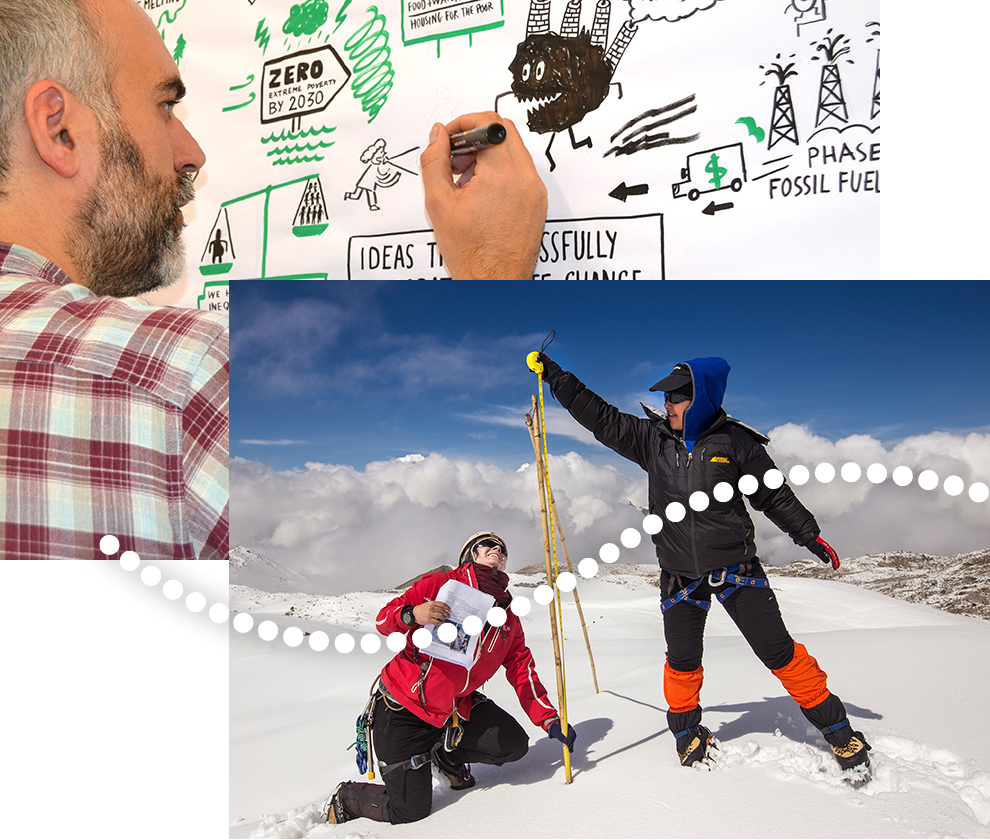This theme asks, How are people adapting to changes in biodiversity within societies that are highly dependent on nature? One of the key impacts of cllmate change is on biodiversity, directly or indirectly, which is well known and being documented around the world, in marine, mountain and other terrestrial ecosystems. Increased extinction rates are a well understood and well publicised kind of biodiversity change, which will have far reaching consequences for ecosystem functions and services (economic and cultural), but there are other changes that perhaps don’t get as much recognition, such as the shifting of species ranges in space (horizontally and vertically) and in time (phenological shifts affecting pollination, seed dispersal, pests and pathogens), and, finally, the explosion of population numbers caused by invasions and outbreaks (for example, lime-disease ticks, pine beetles, plant pathogens, etc). What is even less known is the way people are responding to these changes, especially those groups (indigenous and other) that are dependent on natural resources for subsistence and income (the worlds’ remaining hunter-gatherers, fisherfolk, pastoralists and smallholder farmers), and also who are less likely to seek or have access to official institutional help in dealing with envionrmtal change. We need to know what people are doing in response to these changes, because they may pose serious threats to these people and their livelihoods, health or cultures. What have they learned about them? What impacts are occurring as a result, and what have they discovered or innovated to deal with the threats these changes pose? Adaptation policy from above needs to have a better understanding of, and indeed can benefit from, local understandings and responses to biodiversity change, and the way it interacts with other chnages drivers and their responses. It adds another level of complexity to adaptation research, one which sorely needs attention.
We have been exploring this neglected and important area of research via a series of research projects, starting with an ESPA project on Human Adaptation to Biodiversity Change, between 2010- 2012. Our multidisciplnary consortium consisted of Anthropologists, Botanists, Ecologists, Geographers, Economists, and Modelers, from the Centre for Biocultural Diversity at Kent, Environmental Change Insitute at Oxford, Centre for International Development at SOAS, ATREE in India and Rhodes University in Sout Africa, and explored the invasive species Lantana camara in Southern India as a case study to develop a conceptual framework and methods. Publications and other outputs from this project can be found at the CBCD website. Over the years we have developed our ideas and collected data, presenting work at various conferences, culminating most recently in a Special Issue of the journal AMBIO (Dec 2019) Human Adaptation to Biodiversty Change in the Anthropocene. Special Issue Ambio 48(12), which presents theoretical developments and case study material from Marine and Terrestrial ecosystems.
We are always on the look out for new research about this theme, so do get in touch if you have or want to pursue similar research or, perhaps, make use of the research in a policy context.
Raj Puri (rkp@kent.ac.uk)

Comments
There is no contentYou must be logged in to reply.